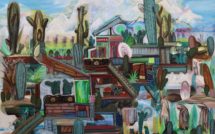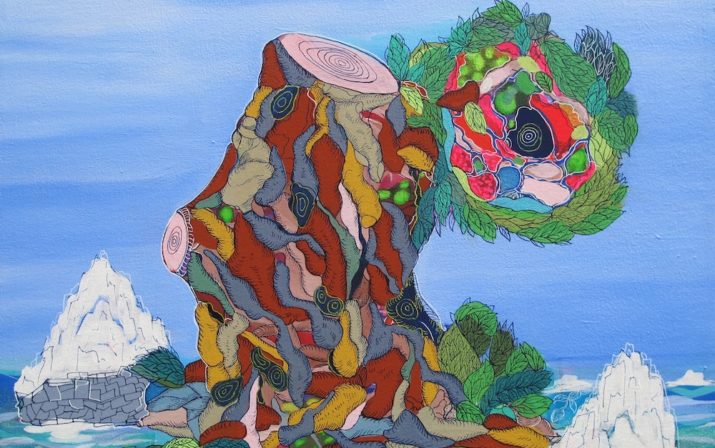
This is part of our special feature on forced migration, Narration on the Move.
Charles Geiger’s paintings are composed of abstracted botanical forms that merge with social and environmental issues. His painting process acts out a relational drama between the power of the natural botanical world and human events. Leaves, trees, and rhizomes are used to symbolically point toward a process of healing and recovery in this new era of rapid climate change and global migrations.
Geiger uses the term “Quasibotanics” to describe a landscape language of lyrical botanical forms used in his painting process. Painting is viewed as a magical process and these forms become visual metaphors in a somewhat shamanistic gesture to “heal” more abstract problems facing humankind: disease, war, violence, extinctions, invasive species and other issues of climate change. The energy of a fresh new sprouting leaf and the interconnectivity of rhizomes become powerful symbolic botanic forces interwoven into his compositions, and speak to primordial relationships of ritual and hope in the age of the anthropocene.
Migration and the movement of people due to war, poverty, and climate change came into focus during Geiger’s recent trips to Mexico and the Middle East. In central Mexico he did studies of cactus plants in El Charco Del Ingenio, a cactus nature preserve. As a “quasibotanic” form, the cactus, a thorny life-supporting succulent, is used in its green growth state and in its charred burnt state to reference the northward economic and climate migrations of distressed people from Central and South America. For the artist, the expanded southern border wall to block migrants is pictorially conflated with the overheating of the planet’s atmosphere, deforestation, wildfires, drought. In “Back Full of Dreams” the burden of the environmental world (biome) along with all human migratory hopes and dreams are shown carried on the back of a burro.
Geiger’s work deals with climate and displacement outside the arid context of cacti, as many of his recent semi-narrative paintings depict severe weather events: melting arctic ice shelves, rising sea levels and the resulting forced displacement of populations. In particular, his sinking island series of paintings of the Pacific island of Kiribati show the island struggling to keep itself above water. In “Of Sand and Snow” Kiribati is in a futile struggle to manufacture its way out of the climate crisis by simultaneously manufacturing sand and snow. Geiger’s work often depicts the island on stilts, much like an offshore oil platform, while in others he shows nature compacted on an ark afloat in the ocean. In “Ocean Wreath Ceremony” a botanic wreath is set out to sea amidst melting icebergs as an offering to what has been lost in the environment, and for what may still yet may be rescued.
Kiribati Series
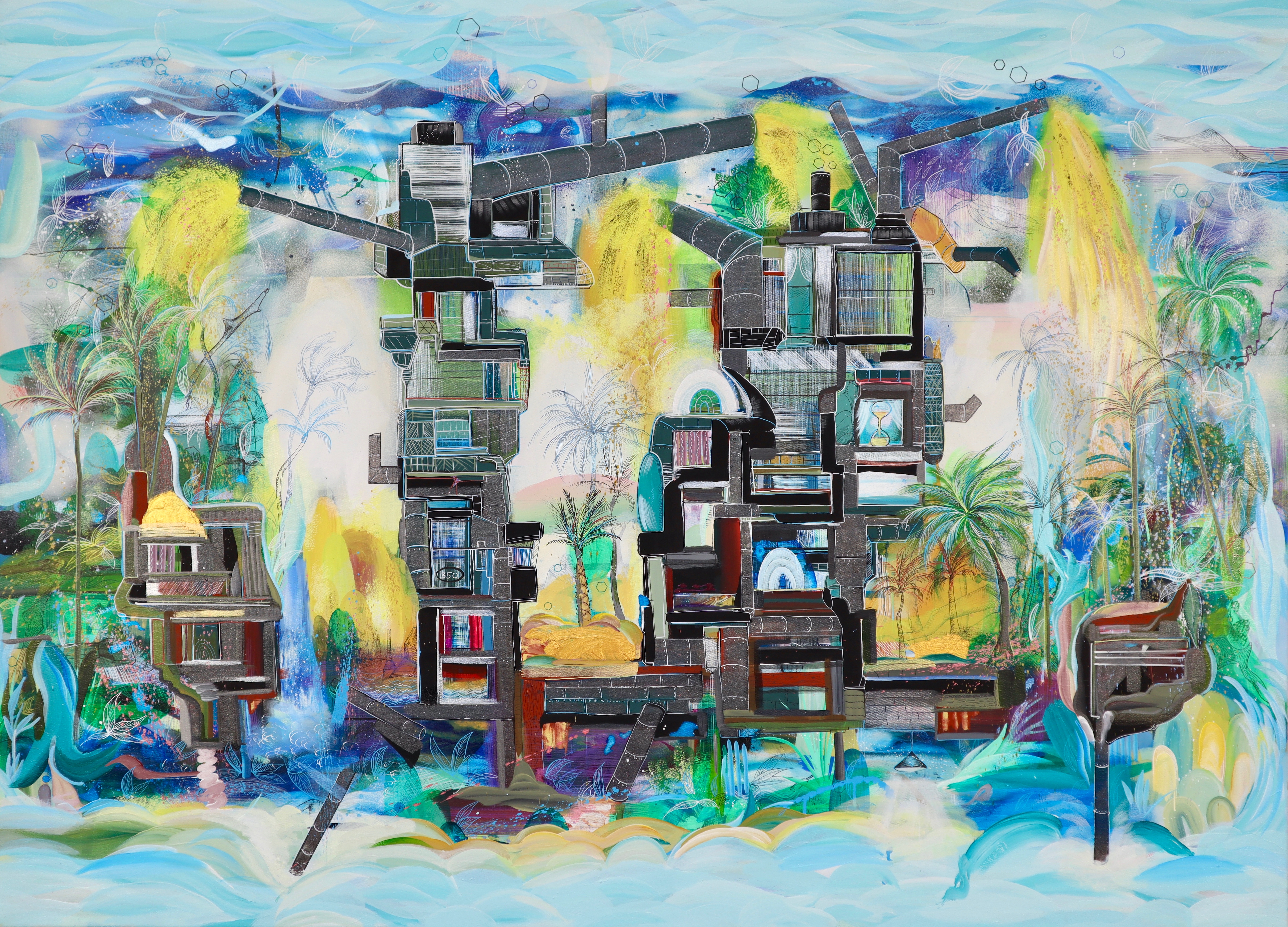
An island attempts to rescue itself from rising sea levels and a warming atmosphere by manufacturing both sand and snow at the same time. Plants and people are both sequestered there, and they attempt to reoxygenate and rescue the biosphere.
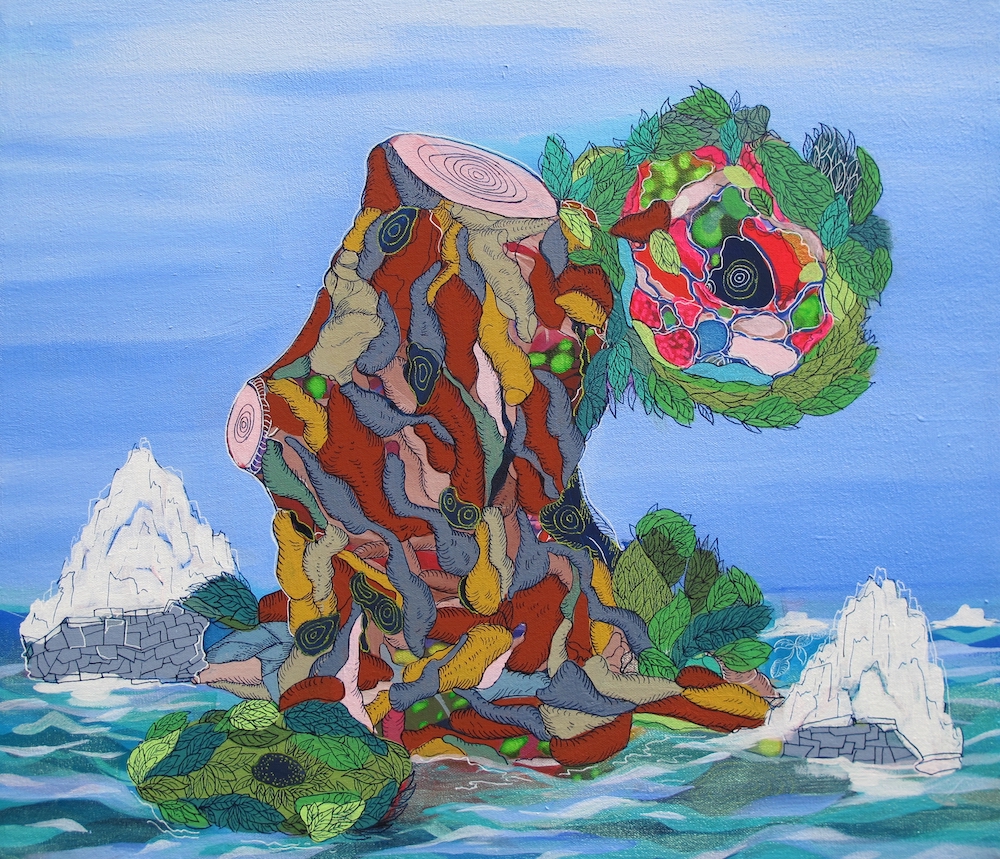
A ceremonial botanic wreath is offered to the arctic ocean by a tree-stump island. It is a gift to the last remaining icebergs. Is it possible to rescue humankind that is adrift and desperately seeking ecological equilibrium?
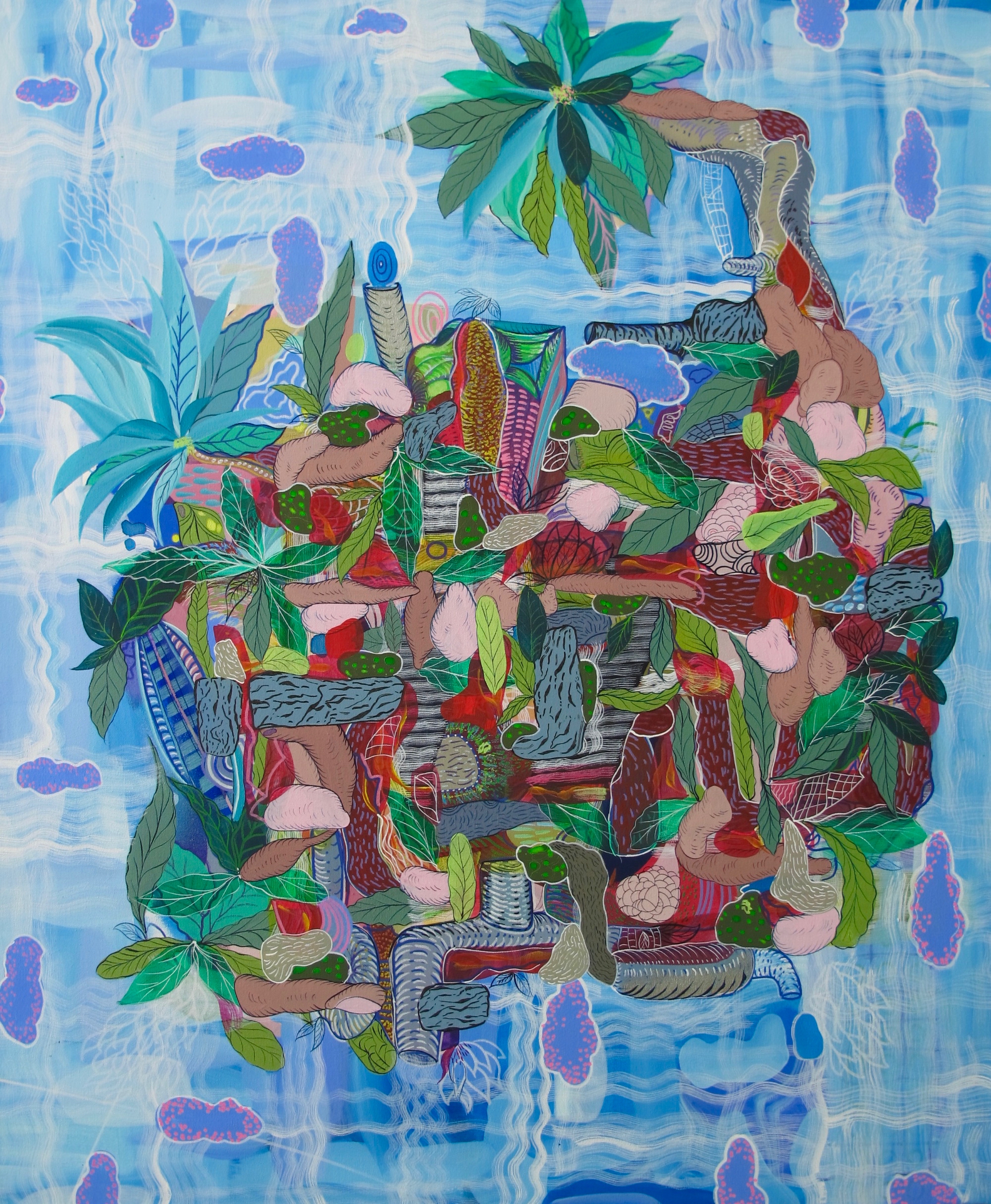
The island of Kiribati in the Pacific Ocean is under threat from rising sea levels and the inhabitants may eventually have to move from their homes. I imagine an island whereby it sets itself afloat like an ark containing all of its botanical needs.
Cactus Series
While spending time in Mexico, I began to use the cactus as a symbolic botanical reference. It is a signifier of the stress expressed in a semi-arid region where migration is happening due to political violence, economic challenges and climate change. The cactus fields in Mexico interested me because the cactus holds moisture and their water is essential for migrants crossing deserts.
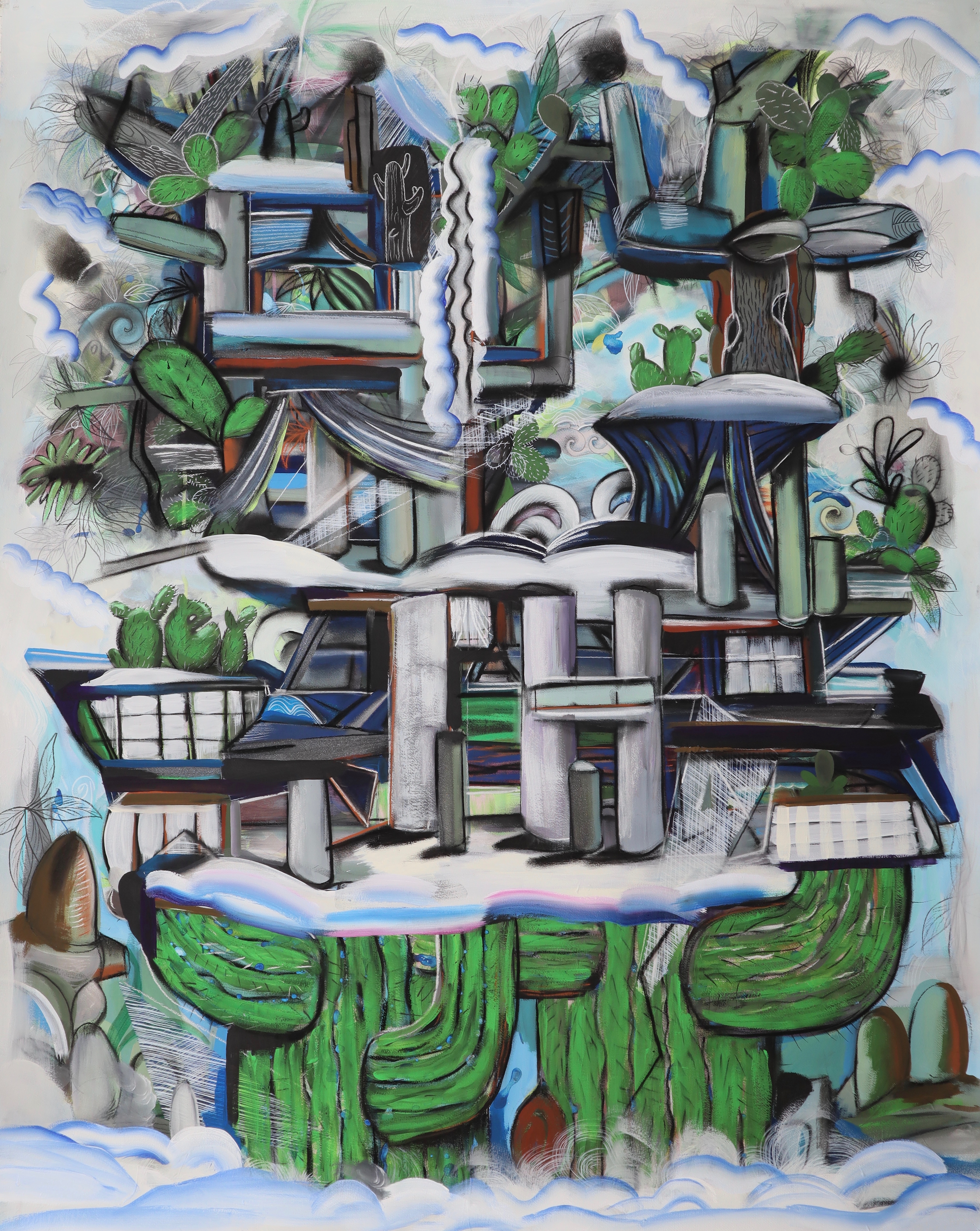
The cactus is depicted as a platform holding botanical habitation, absorbing excess vapor from the atmosphere and offering sustainable resources.
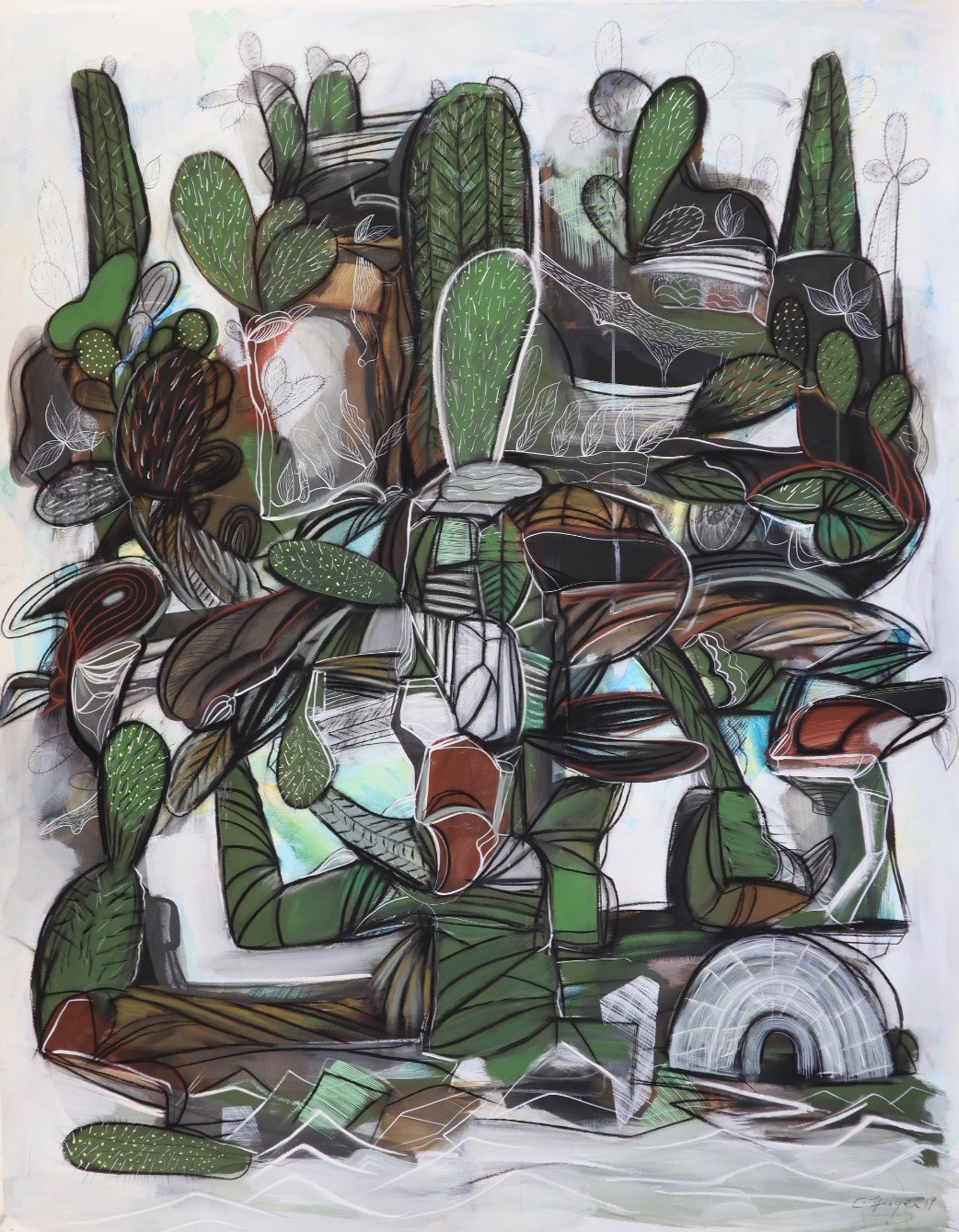
The burning of cactus fields contributes to particulates in the environment. The fields regrow in hot conditions, and yet they are in proximity to a remaining igloo that might serve as a shelter. This work addresses themes of subterfuge and sustainability.
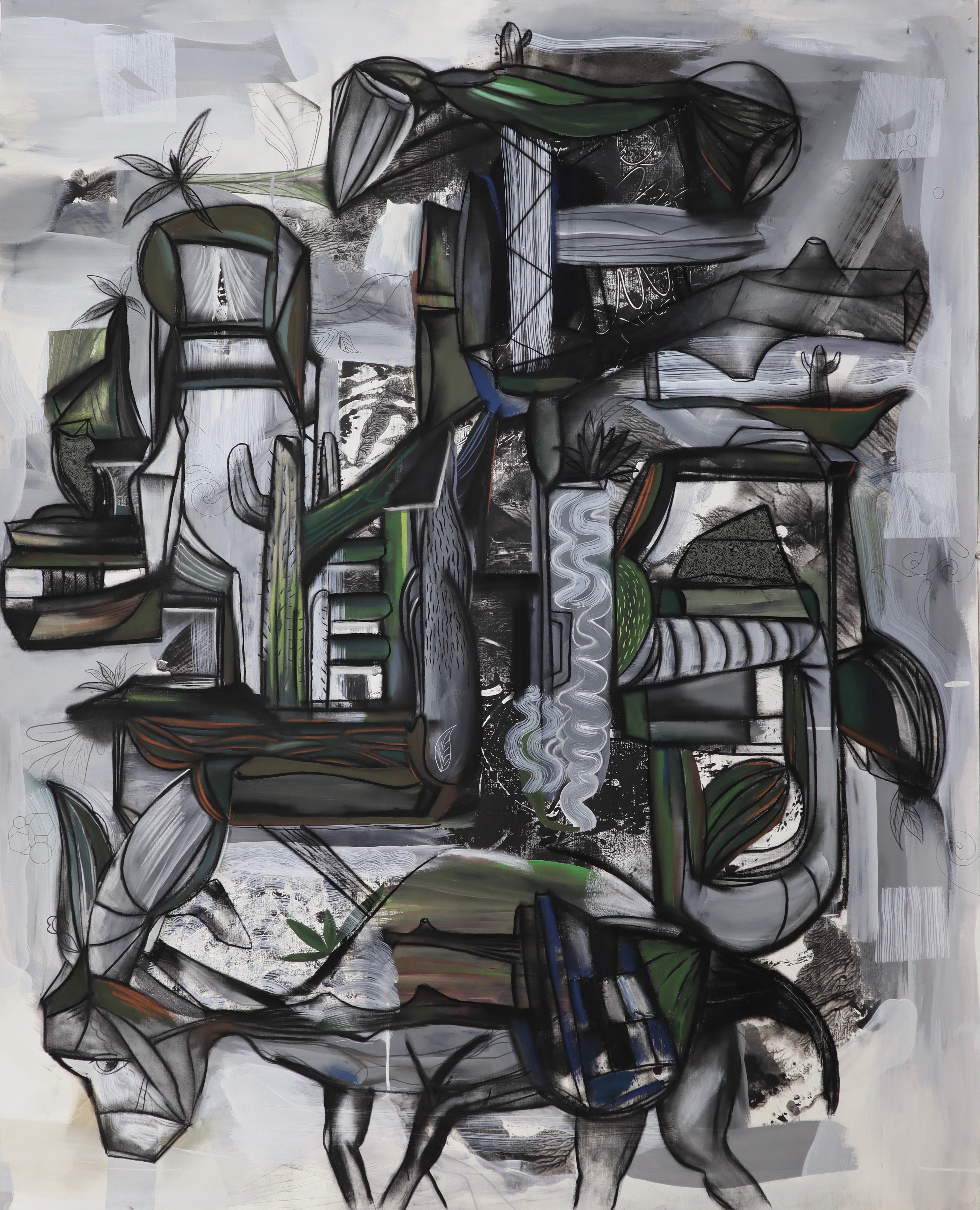
Southern migration and the hopes and dreams carried symbolically as cactus botanical forms.
Charles Geiger lives and works in his studio in New York’s Hudson Valley. Concerned with climate change, Geiger’s painting practice reinterprets nature using scale shifts in compositions that intermix leaf, tree, and rhizome forms into surrealist interstitial landscapes where rituals of rejuvenation, healing and hope are invoked. His recent exhibition on climate change at NYU Abu Dhabi was underwritten by the Rachel Carson Center, NYU Arts and Humanities Art & Art History, and eARThumanities.
Published on October 29, 2019.


